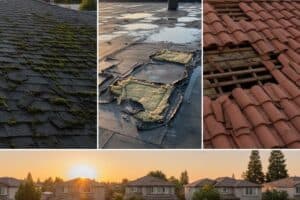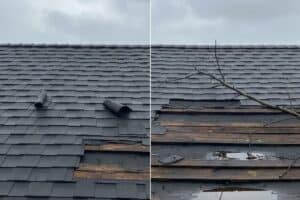Landlord insurance protects you against a number of unexpected events that can affect your rental property. Costs can vary based on tenant risk, area, and policy coverage. Renters insurance coverage type, claim process, and premium rates are all crucial factors for landlords to consider when looking for the right policy for investment security.
Tenant Risk By Rental Type
Short-term rentals, similar to those listings on websites like Airbnb, typically come with a higher premium because of more wear and tear and a greater potential for damage. Insurers face less risk with long-term renters. Those with stable rental histories are often charged lower rates.
Tenant profiles are also essential. Students and shared residences are even charged with higher premiums because of the increased foot traffic and turnover. Additionally, homes occupied by retirees or working professionals could have cheaper insurance costs.
Location & Natural Disaster Risks
Where a property is located plays a large role in landlord insurance prices. Areas that are prone to bushfires, floods, or cyclones usually generate high premiums because of the likelihood of damage. The Insurance Council of Australia has said premiums have increased in high-risk areas as the threat of extreme weather events continues to increase.
Usually the location of the property determines the landlord insurance quote. While properties in dangerous neighbourhoods often have more costs due to a larger likelihood of theft or damage, homes in safe, well-kept areas typically have fewer insurance charges.
When identifying the final cost, insurance firms take a look into different factors, such as past insurance claims, crime trends, and environmental circumstances.
Age and Condition of Building
Older buildings typically have higher insurance costs because they may have weak structures and old electricity or plumbing systems. Insurance companies consider the risk of upkeep issues, such as burst pipes or faulty wiring, which can lead to claims.
Newer buildings that meet current construction standards and include energy-saving features may receive lower insurance rates. Regular maintenance and upgrades, such as getting a new roof or a security system, can increase a property’s value and reduce insurance costs. Some insurance companies give discounts for homes with safety features like deadbolts, smoke alarms, and security cams.
Coverage of Policy and Add-Ons
In determining insurance costs, the level of coverage selected is the single most important factor. Standard policies generally cover standard risks such as fire, storm damage, and tenant-related incidents. Other cover, including protection against rent default, malicious damage, and loss of rent through tenant eviction, adds to premiums.
Landlords might also purchase legal liability coverage, which protects against a claim if a tenant or visitor gets hurt on the property. Though these add-ons increase the cost of your overall policy, they help you protect against the risk of potential losses. Shopping around for policies and buying only what coverage is needed can help keep premiums in check.
Secure Your Investment with Appropriate Cover
Knowing what influences landlord insurance costs helps property owners to make better decisions. Taking tenant risk, location factors, and coverage options into account can help landlords find a policy that provides both value and protection.
Looking for personalised landlord insurance? Find expert reviews and compare quotes online from reliable companies in Australia to see the best coverage for your investment needs today.











